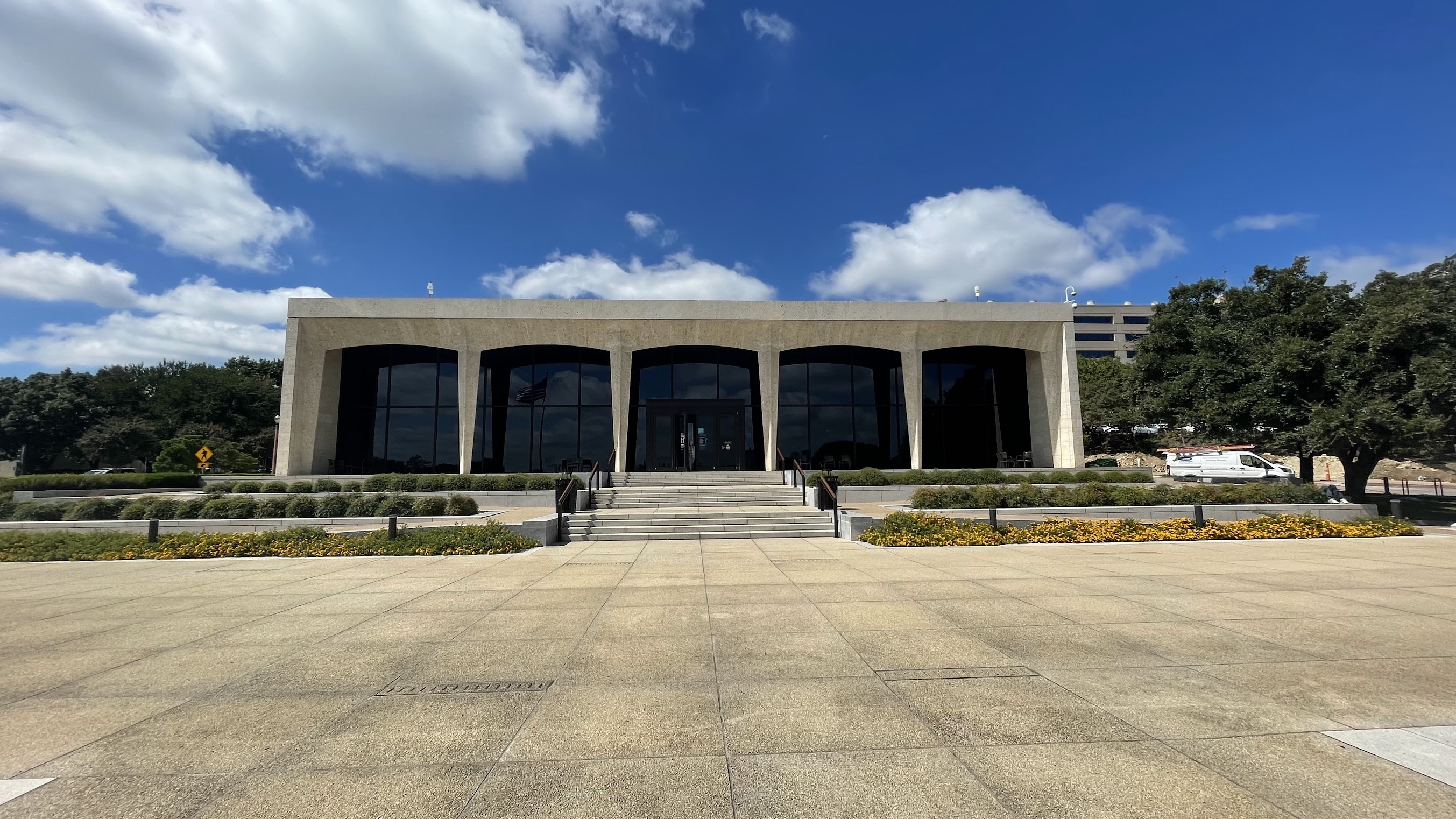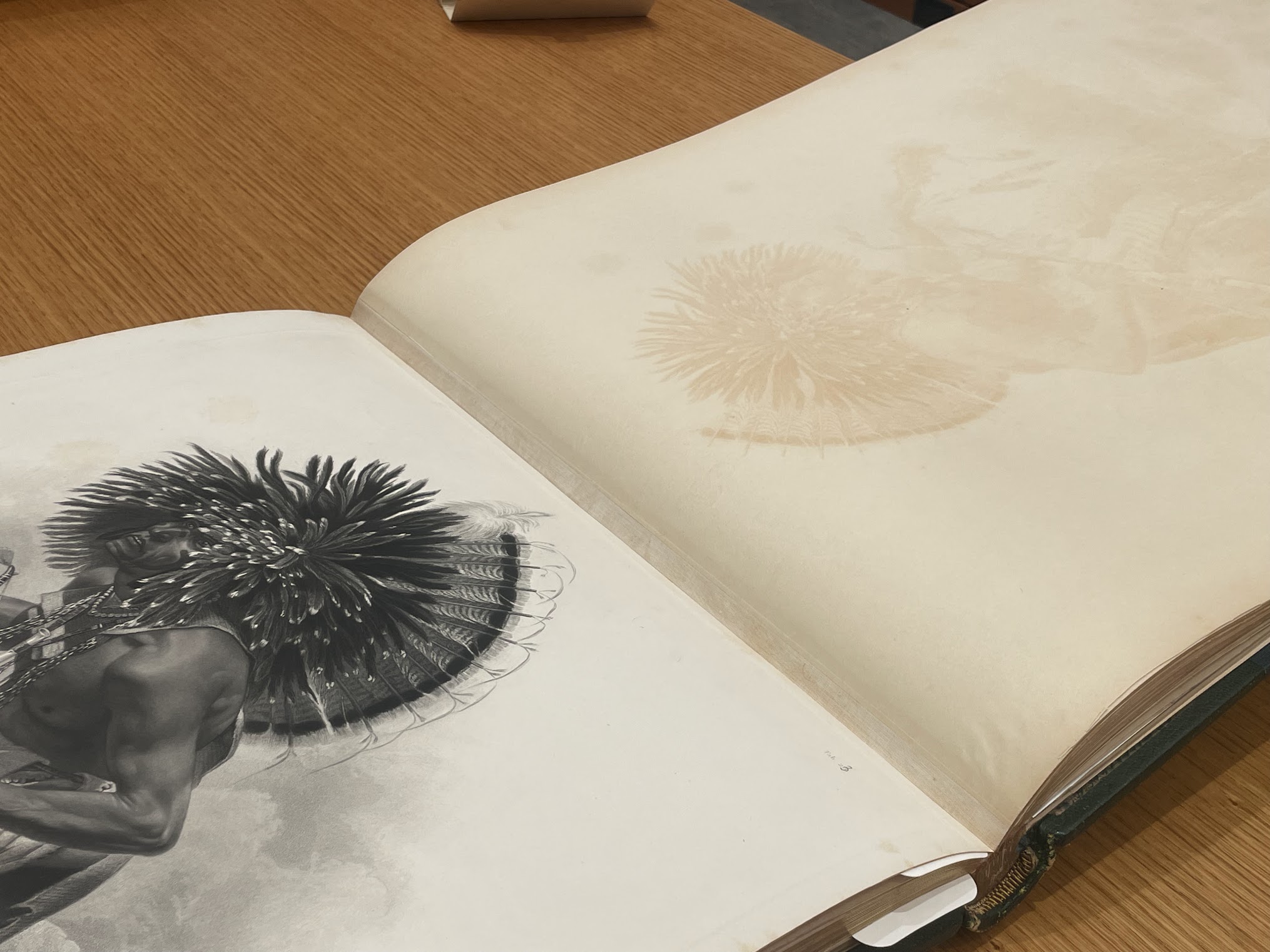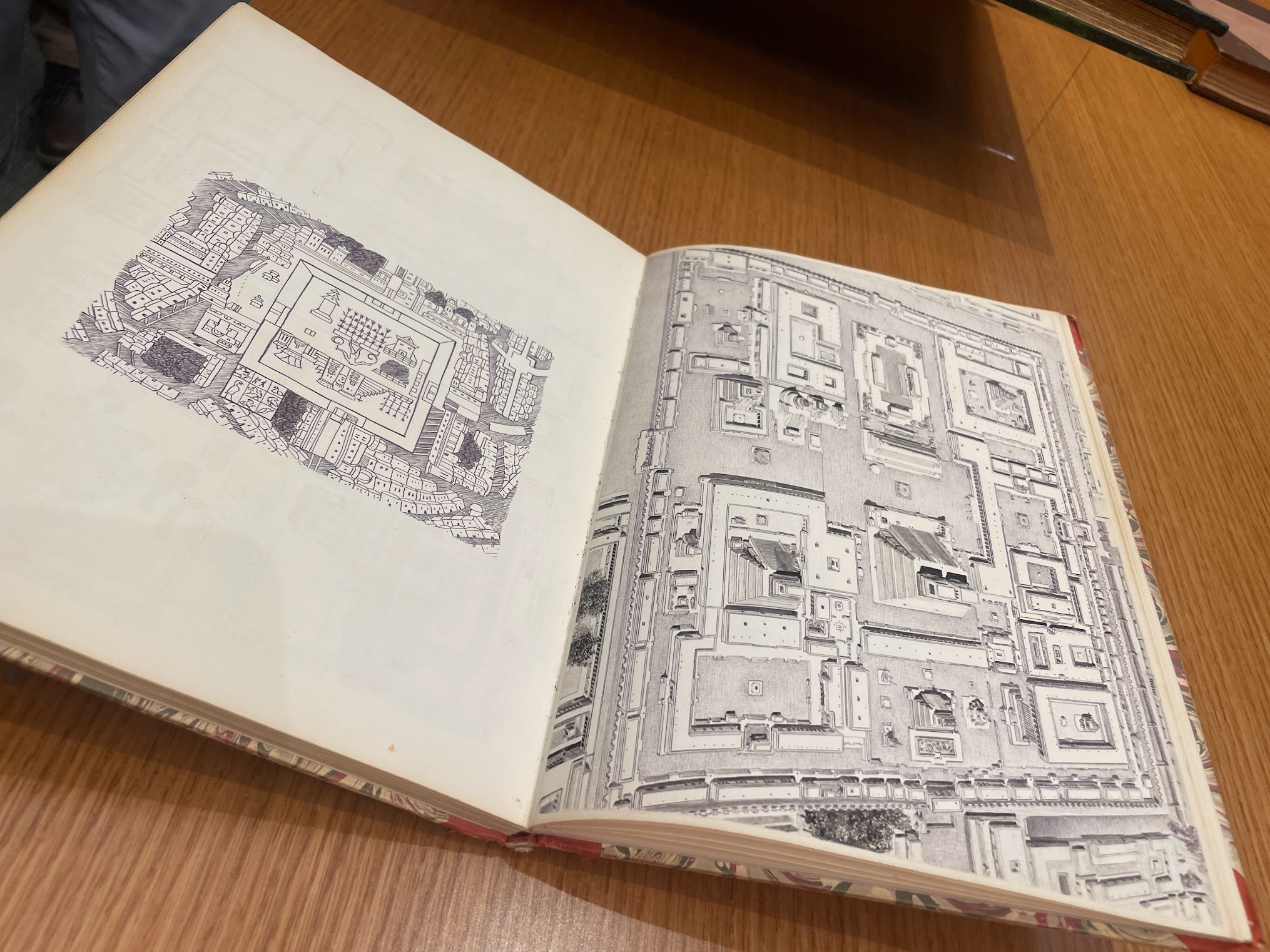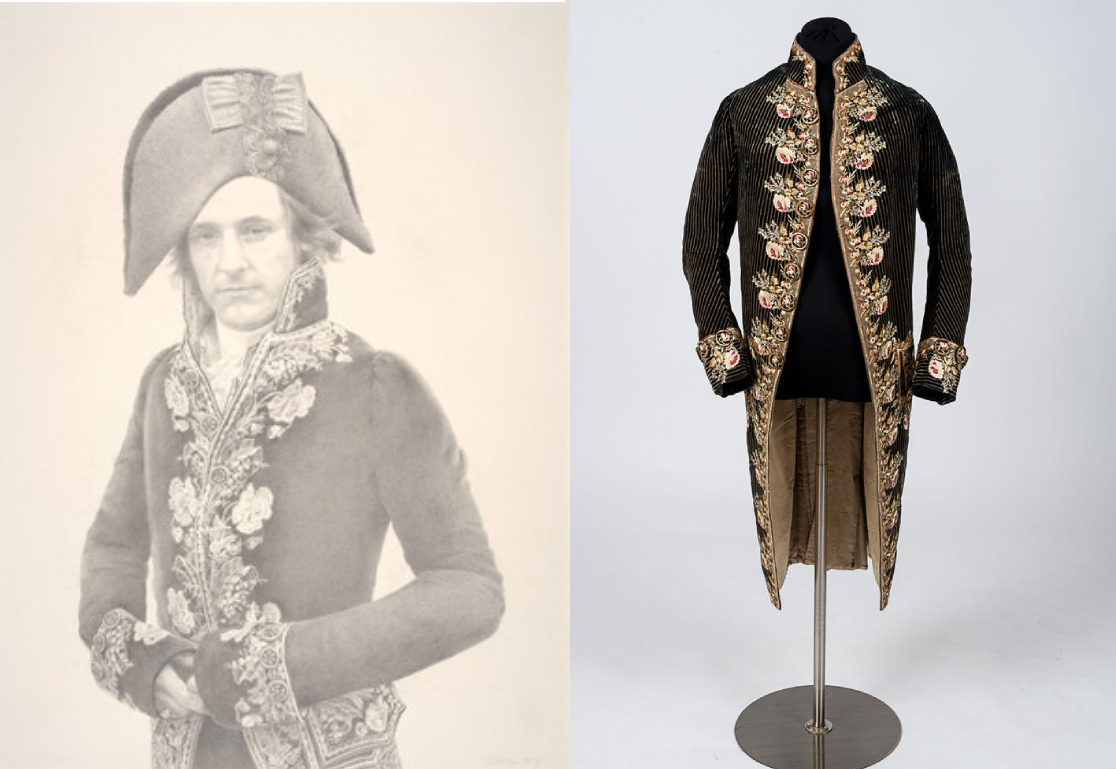Amon Carter: archivists, artifacts, and the golden record
By lauren on
Last week I attended the Metroplex Archivists' meetup held at the Amon Carter Museum of American Art. It's always interesting to hear what other information professionals in the area are working on. The best part is getting a behind-the-scenes tour at the hosting institution. I admit I hadn't been to the Amon Carter since I started at the Kimbell, so I was looking forward to the visit.

Back in the archives, they showed us a manuscript collection from a painter in the Texas frontier era.
We also were treated to a view of some beautiful artifacts in the reading room. There was a large folio of iron gall ink prints where you could see the oxidization ghosting on the opposite page:

I don't quite know how I'm supposed to feel looking at objects like these.
Is it ever possible to truly be ethical in ethnographic studies?
I'm far more interested in the iron gall oxidation. I found this article detailing iron-gall ink degradation and the observed "burn," and that "iron-gall inks can induce the scission of cellulose by acid catalysis." Which is similar to celluloid decomp, as the plastic base shrinks due to acid-catalysed chain cission.
This visit was my introduction to the Gentling brothers. My knowledge of fine art is admitedly limited. Save the art history giants depicted in the board game Masterpiece, or the permanent collection at the Art Institute of Chicago, I'm not particulaly well-versed. Especially in terms of contemporary works on canvas.

At the head of the room hangs a portrait of Ed Ruscha done by Scott Gentling in graphite. Ruscha is dressed in a 1770s jacket, and one that I felt was particularly familiar. Upon reviewing the video I took on my visit to the Texas Fashion Collection at UNT, it is in fact the selfsame jacket! Cited as a donation by the family of Stuart and Scott Gentling. How satisfying.

I'm struggling to find the words to describe what I felt seeing Dario Robleto's The Signal. A small gallery with the walls lined in small prints, each one an etched heartbeat in soot, a recorded response to the written prompt. Smelling lavender. Hearing an opera. While it didn't state explicitly that these prints were referencing it, I recalled an early sound recording process where paper coated in lampblack and a fine needle was used to etch a soundwave. While I realize I'm conflating heartbeats and soundwaves, I couldn't help but think if it nonetheless. [I was thinking of phonautograms]
Maze brain diversion incoming: What it really called to mind was the device shown in My Fair Lady, wherein a flame and rotating mirror show the speaker's pitch. After much sleuthing, I identified it as Koenig's manometric flame apparatus. But I'm going down such a rabbit hole with this that i'll save it for a later post.
What I was wholly unprepared for was the film, Ancient Beacons Long for Notice. I was vaguely aware of the Golden Record, but not to the extent that I would be 70 minutes later. The film, a joint commission by Amon Carter and the McNay, not only delves into the contents of the Golden Record, but what it means to archive humanity in sound. The tldr is that the Golden Record was intended to be a recording of sounds that represent humanity, and were attached to the two space probes Voyager I and II in 1977. It's a fascinating story of how Ann Druyan, the curator of the record, went about researching and determining what sounds to include.
Ann Druyan is only mentioned in two lines further down the wikipedia page. Carl Sagan headed the project, but Druyan was tasked with selecting material for the record. Druyan & Sagan would fall in love over the course of the project, and were married until his death.
The film draws a parallel between the Golden Record and a field recording Frederick William Gaisberg made of gas shells on the Western Front of WWI in 1918. Gaisberg's wikipedia entry doesn't even mention the recording, and most google searches turn up a different recording of an interpretation of the end of the War. According to Ancient Beacons, Druyan wanted to include the Gas Shell recording, but faced opposition in favor of more "positive" representations of humankind.
For all the aspects of human life that can be captured in sound, there were still emotions that could not. To that end, Ann recorded EEG and EKGs of her own brain and heart, compressing the waves down and including them on the record. Maybe, just maybe, when the probes ever meet life outside of our galaxy, these analog methods of recording would still be readable.
Dario Robleto's exhibition The Signal, featuring the film Ancient Beacons Long for Notice is on view at the Amon Carter Museum of American Art through October 27, 2024.
Other links if you're interested:
Vice interview with Ann Druyan
NASA's soundcloud post of the Golden Record, disc 1
Phonograph Records and the Sounds of War
"Actual recording of the Gas Shell Bombardment by the Royal Garrison Artillery "HMV D378 (09308)
EMI Archive record for Gas Shell Bombardment
 Read more
Read more
